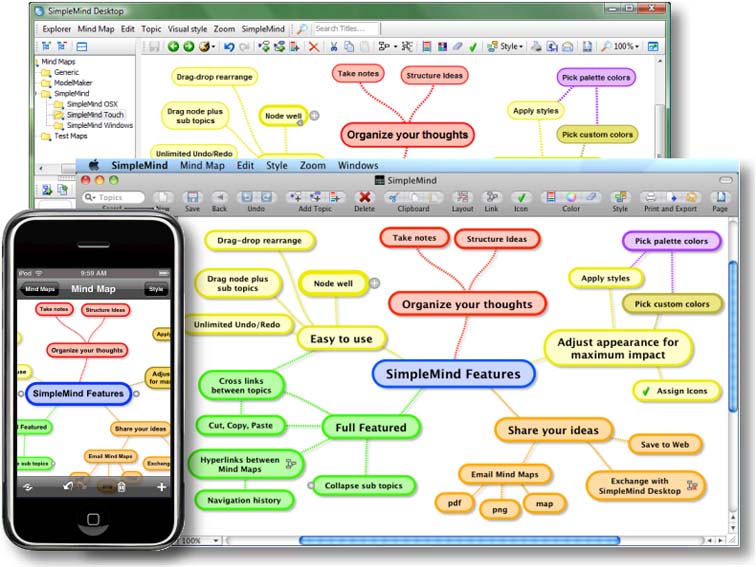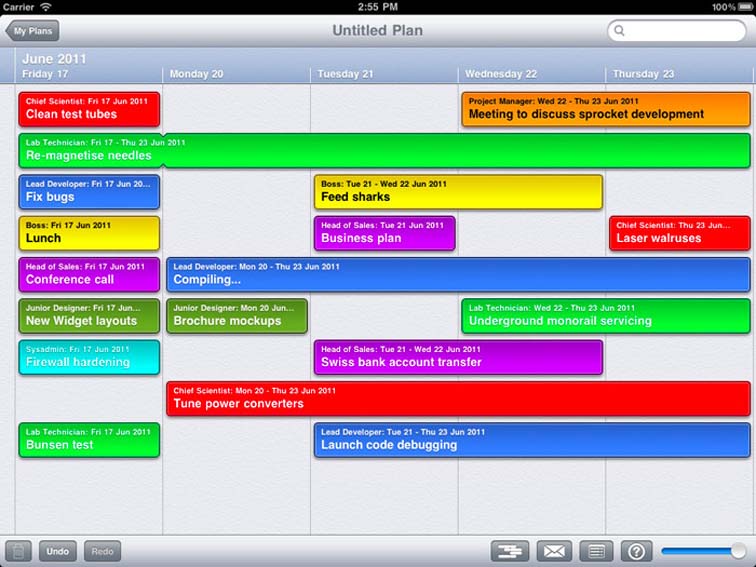
What Are The Critical Tools For PBL?
Project-Based Learning is a 21st century approach to learning that acts both as a curriculum and instruction tool, as well as a new way for students to think about school. Rather than strictly academic lessons and units, real-world problems can be solved, and students gain experience with long-term management of the learning process, and the possibility of self-direction.
Project-Based Learning allows naturally embedding of “school” in authentic environments whether those are digital or physical. It is a way of learning that is as much about the process as the project, allowing for the seamless integration of technology, and the inclusion of digital and social media to solve relevant personal and social challenges.
A Simple Project-Based Learning Process
The following apps and digital tools are built around a vastly over-simplified-but-you’ll-still-get-the-picture 4-step process:
1. Brainstorm: This is where the students brainstorm problems, ways to solve those problems, and the logistics and limits of any solutions. And if the project isn’t challenge-based–e.g., it is primarily creative in nature–brainstorming is still necessary to understand the problems, establish any goals, and identify audience, purpose, and available tools and platforms.
2. Plan: The next step is to create a plan based on the above often . A second effect is a streamlining of things; whereas brainstorming is often messy and a bit chaotic (if it’s honest), planning allows for prioritizing to occur, and separation for more and less important elements of the project.
3. Collaborate: Though collaboration is possible during brainstorming and planning, it really comes into focus here, when the project comes to life. This can also be thought of as the “Drafting” stage of the project where students research, write, design, create, revise, and fine-tune any products of the project, or the process of the project itself.
4. Publish: Among technology’s greatest talents is the ability to make the classroom wall’s transparent. All project-based learning that features products of any sort have the potential–if not the right–to leave the school building and “perform” in the real world, creating a more authentic need-to-know in the students, and making thinking and learning “public” in the process.
In this process, students use technology each step of the way to improve access, collaboration, and curation, without having technology dominate the entire process.
The technology serves the learning process itself.
BRAINSTORM
1. MindNode
Platform: iOS
Price: Free
Description: Like MagicPad below, this one is also pricey at ten bucks, but if you do a lot of concept-mapping in your classroom that you want to save, share, and publish, it doesn’t make much sense to save a few dollars and have students fight a sub-par app.
Sharing options from their iTunes page:
Share
• iCloud sharing (requires iOS 6): access your mindmaps from MindNode touch for iPhone and iPad or MindNode Pro on any Mac.
• Dropbox sharing: open files from your Dropbox and save them back to it when you’re done working on them
• WiFi sharing: share files between your Mac and your iOS device over the local wireless network
• Export your mind map as a PDF, FreeMind or OPML document, PNG or TIFF image, or text document.
• Send your mind map to other apps in any of the supported export formats
• Send your mind map to the camera roll as an image
2. SimpleMind+
Platform: iOS, Android
Price: Free
A dead-simple concept-mapping app that doesn’t have more features than it needs, and has an easy to use interface.

PLAN
3. Sooner
Platform: iOS
Price: Currently on sale (70% off) at .99
Sooner is a highly-visual to-do list with daily and weekly views to for micro and macro planning. A must-have for project-based learning.
4. MagicPad
Platform: iOS
Price: $9.99
MagicPad is a powerful app—and its price reflects it at ten bucks. It features concept-mapping for brainstorming, note sharing, task prioritization, and related scheduling. Probably overkill for most K-8 classrooms, but high school and beyond, it could prove valuable.
5. Evernote
Platform: Web browser, iOS, Android
Price: Free
Description: If the full-on project-planning apps are overboard and you only need to be able to share simple notes, images and other single-media fare, Evernote is your best bet. Cloud-based, easy-to-use note-collection and sharing FTW.
6. Begin
Platform: iOS
Price: $6.99
If Sooner doesn’t meet your project-planning needs, Begin just might. It also allows for similar planning views, and makes it easy to share them as image files or pdfs via email.
It was also designed for iPad-use from the ground up, so it works. Which is nice. Seven bucks is a tad steep, but sometimes you get what you pay for.

COLLABORATE
7. Screenchomp
Platform: iOS
Price: Free
Description: An app that records screencaptures for annotation and sharing.
8. Twitter
Platform: Web browser, iOS, Android
Price: Free
Description: It’s twitter. You probably understand how it works, and how it can be used in the classroom. It seems like a clumsy way to message, but the kids love it. So let them eat cake.
9. DigiSocial
Platform: iOS
Price: Free
Description: Like a mash of VoiceThread and Instagram. As with all apps, how effective it is depends on the age of the students, and the learning goals you have in mind.
PUBLISH
10. Jux
Platform: Web Browser, iOS
Price: Free
Jux takes a minimalist approach to sharing content and ideas, offering the entire screen to fill with a student’s thoughts, project images, or textual analysis. It is the anti-blogging way to blog.

11. Prezi
Platform: Web browser, iOS
Price: Free accounts with paid upgrades
If Jux is the anti-blog, Prezi is the anti-PowerPoint, allowing for the sequencing of presentations to be done in two dimensions, and opening a world of possibility for the use of space and depth. In this way, Prezi can be the project, or simply be a showcase for the project students complete.
12. Storify
Platform: Web browser, iOS
Price: Free
Storify is an interesting new app that allows you to browse and share from multiple social media streams and blogs at once.
Their iTunes page explains:
“Use Storify to:
-Tell a news story about something that is getting attention on social media
-Tell the story of a public event such as a conference or other live event where attendees are posting to social networks
-Tell the story of a personal event like a wedding, party or night out with friends
-Tell your company’s story by using what you and your customers say on social media
-Tell your own story using the photos, video and updates you post on social networks to help you remember and share what is most important to you”
13. Kidblog
Platform: iOS
Price: Free
Description: Kid-safe blogging that can be used at home or in the classroom. The user-interface isn’t as simple as it could be, but after spending a bit of time with it you’ll figure it out. Images can also be uploaded directly to the blog without using embed codes.
14. Smart Drawings
Platform: iOS
Price: $3.99
Description: Smart Drawings allows students to create technical drawings, from blueprints to line-based sketches of proposed projects, products, or other widgets.

15. Moxier Collage
Platform: iOS
Price: $1.99
Description: A simple way to mash media forms, similar to Glogster and Phoster.
Image attribution flickr user flickeringbrad, and the app developers respectively